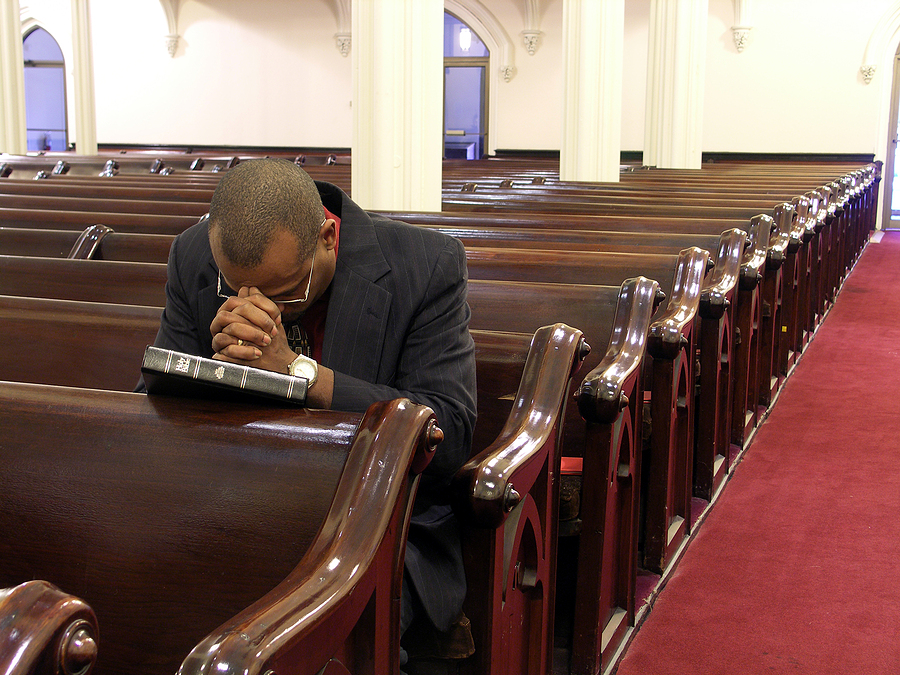
Spirituality is the Key to Re-Building Community
In a world where loneliness is rampant but religious affiliation is down, many churches face the urgent question: How do we reach people who are longing for connection and meaning? This blog explores the intriguing possibility that focusing on deepening spirituality is the key to re-building community in the post-pandemic church.
What We Are Doing Is Not Sufficient
People have been quietly quitting the church for decades. Even before the pandemic. The spiritual but not religious have been letting us know for years that what the church offers is not sufficient. It is leaving needs unmet. People are looking for something more. Rather than fearing or dismissing the message that the spiritual but not religious have communicated by leaving the church, let’s learn from them instead. They’re signaling the need for a shift in church culture we can all benefit from. That’s why I’m writing about how spirituality is the key to re-building community.
Yet, before we look at how the church can re-build community through spirituality, we need to dispel a common myth. This is the myth that the church already “does” spirituality.
The Myth That “We Already Do” Spirituality
Many church worship experiences excel in talking about God, or Jesus, or the Holy Spirit. They tell stories and teach lessons related to God. This is good as far as it goes. However, for many people who are hungry for God, this does not go far enough. There is a difference between talking or singing about God and actually experiencing the presence of God. Now, it’s not that God, Jesus, and the Holy Spirit are absent from worship. They are not. It’s that no space is left to intentionally experience their divine presence.
Spiritual Affiliation Has Increased
People assumed that when the pandemic ended that people would automatically return to church and sanctuaries would be full. That didn’t happen in most congregations. In my book, Forging a New Path, I compared COVID-19 to the Bubonic Plague. The plague’s impact on medieval Christians taught us how crises often lead to new ways of connecting with the divine. When traditional structures faltered in medieval Europe, lay movements and personal encounters with God flourished. In fact, the spiritual but not religious movement was born. This is an interesting historical parallel to where we are right now in our post-pandemic world.
Then as now people yearn for meaning and purpose. Yet, then as now, the church wasn’t providing the experience of the divine. This presents an opportunity: Study after study shows that humans are hardwired for meaning and purpose. Both our souls and our cells are created to experience the transcendent. Even non-religious people are wired for ultimate purpose and meaning.
This is good news. The God of the Bible is a God of direct encounters. We can reclaim this aspect of the Bible and guide people towards direct encounters with God today. This shift will benefit everyone, including those who are already part of our congregations, and those who are not.
What is Spirituality?
We talk a lot about being spiritual. But what does it really mean? I like to turn to a well-known passage in Ezekiel (37:1-10) that speaks of Ezekiel’s vision of dry bones coming alive through God’s breath. You may recall that in both Hebrew and Greek, the word for breath is also translated as Spirit. Thus, spirituality is being aware of God’s very real presence within us. A presence that is as real and as immediate as the breath.
In Christianity, spirituality may be expressed in three forms: personal, communal, and visionary spirituality.
Personal Spirituality is experiencing God’s presence in a way that fosters a sense of individual worth and belonging. As you engage in personal spirituality, you come away with the distinct sense that “I matter.”
Communal Spirituality is participating in a community that is founded in personal spirituality and woven together by increased love and support. As you engage in communal spirituality, you gain the distinct sense that “we matter.”
Visionary Spirituality is recognizing the collective impact that your lives can have on others. This awareness then becomes a shared mission. As you engage in visionary spirituality, you gain the distinct sense that “y’all matter.”
Re-Building Community
By listening to the “spiritual but not religious” movement and cultivating authentic spiritual experiences, the church can re-build a sense of community. This doesn’t require abandoning tradition, but rather reclaiming what has always been part of the church’s tradition: direct experiences with the divine. As you create spaces for individuals to connect with God and each other in meaningful ways, be prepared for a fresh wind of the Spirit.
By embracing the power of personal, communal, and visionary spirituality, the church can lead the way in re-building a sense of community and of belonging. I would love to hear your thoughts or questions on spirituality as the key to re-building community in post-pandemic and post-disaffiliation churches. Sign up for a discovery session here.
I have one more option for you. If you want to discover how you, too, can tap into your soul’s spiritual intelligence as a conscious leader, then please join me in a free 60-minute seminar, Elevate Your Ministry: An Invitation to the Power of Conscious Leadership. In this seminar I will introduce you to a new program that I am very excited about, Conscious Leadership! Come discover how you can move towards Jesus’ call of being Salt and Light for the those around you.
Copyright © 2024 rebekahsimonpeter.com. All Rights Reserved.





